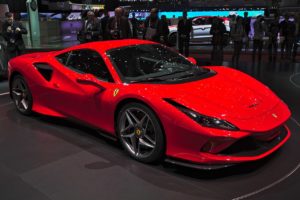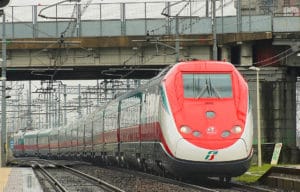The automotive industry is a significant part of the Italian manufacturing sector, with over 144,000 firms and almost 485,000 employed people in 2015, and a contribution of 8.5% to Italian GDP. Fiat Chrysler Automobiles or FCA is currently the world’s seventh-largest auto maker. The country boasts a wide range of acclaimed products, from very compact city cars to luxury supercars such as Maserati, Lamborghini, and Ferrari, which was rated the world’s most powerful brand by Brand Finance.

Italy is part of the European single market which represents more than 500 million consumers. Several domestic commercial policies are determined by agreements among European Union (EU) members and by EU legislation. Italy introduced the common European currency, the Euro in 2002. It is a member of the Eurozone which represents around 330 million citizens. Its monetary policy is set by the European Central Bank.
Italy has been hit hard by the financial crisis of 2007–08, that exacerbated the country’s structural problems. Effectively, after a strong GDP growth of 5–6% per year from the 1950s to the early 1970s, and a progressive slowdown in the 1980-90s, the country virtually stagnated in the 2000s. The political efforts to revive growth with massive government spending eventually produced a severe rise in public debt, that stood at over 131.8% of GDP in 2017, ranking second in the EU only after the Greek one. For all that, the largest chunk of Italian public debt is owned by national subjects, a major difference between Italy and Greece, and the level of household debt is much lower than the OECD average.

A gaping North–South divide is a major factor of socio-economic weakness. It can be noted by the huge difference in statistical income between the northern and southern regions and municipalities. The richest province, Alto Adige-South Tyrol, earns 152% of the national GDP per capita, while the poorest region, Calabria, 61%. The unemployment rate (11.1%) stands slightly above the Eurozone average, but the disaggregated figure is 6.6% in the North and 19.2% in the South. The youth unemployment rate (31.7% in March 2018) is extremely high compared to EU standards.
Transportation:
In 2002 there were 668,721 km (415,524 mi) of serviceable roads in Italy, including 6,487 km (4,031 mi) of motorways, state-owned but privately operated by Atlantia. In 2005, about 34,667,000 passenger cars (590 cars per 1,000 people) and 4,015,000 goods vehicles circulated on the national road network.
The national railway network, state-owned and operated by Rete Ferroviaria Italiana (FSI), in 2008 totaled 16,529 km (10,271 mi) of which 11,727 km (7,287 mi) is electrified, and on which 4,802 locomotives and railcars run.

The main public operator of high-speed trains is Trenitalia, part of FSI. Higher-speed trains are divided into three categories: Frecciarossa (English: red arrow) trains operate at a maximum speed of 300 km/h on dedicated high-speed tracks; Frecciargento (English: silver arrow) trains operate at a maximum speed of 250 km/h on both high-speed and mainline tracks; and Frecciabianca (English: white arrow) trains operate on high-speed regional lines at a maximum speed of 200 km/h. Italy has 11 rail border crossings over the Alpine mountains with its neighboring countries.
